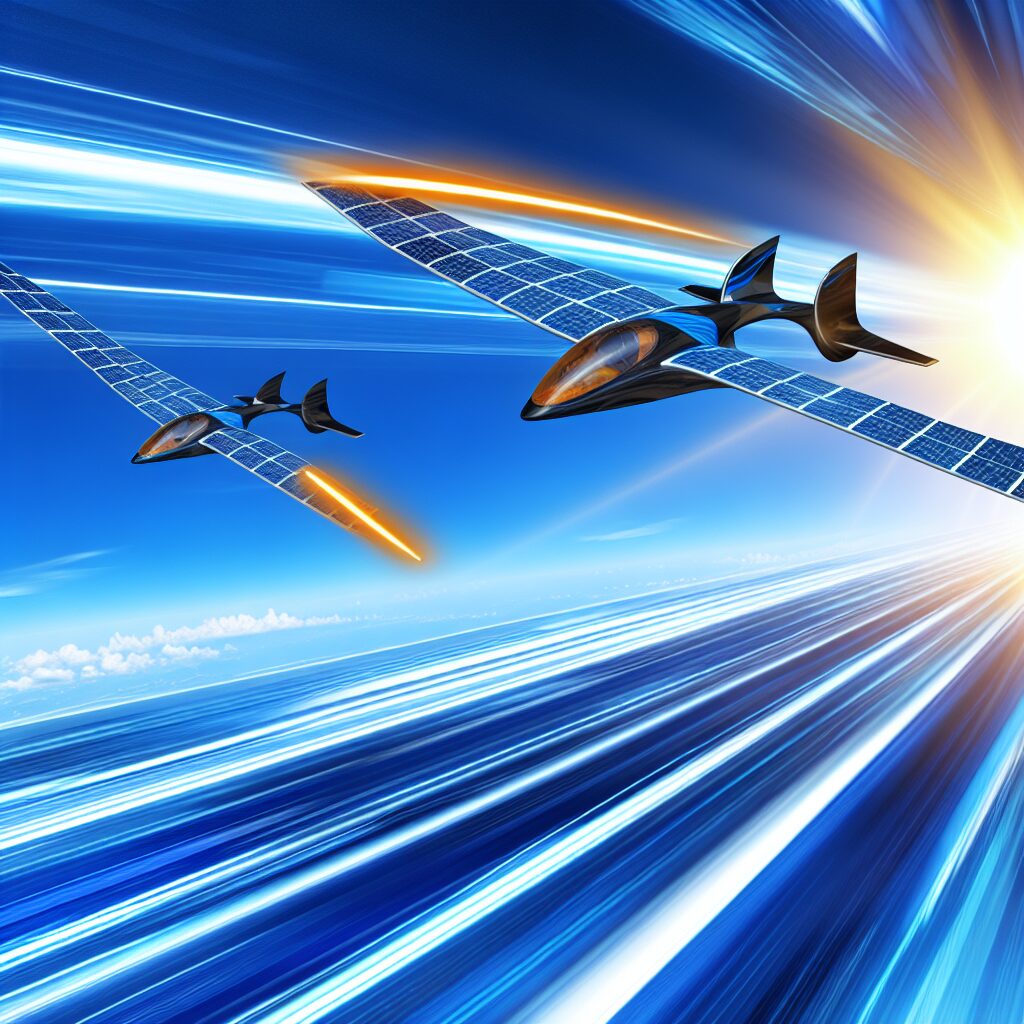Harnessing the Power of the Sun for Aviation
In recent years, the field of aviation has witnessed remarkable advancements. Among these is the integration of solar energy into flight technology, a trend that promises to reshape the skies. Researchers are at the forefront of this transformation, exploring how solar power can be efficiently utilized to propel aircraft, reduce emissions, and cut costs.
The Role of Solar Power in Flight
The primary advantage of solar-powered flight lies in its sustainability. Unlike traditional fossil fuels, solar energy offers a renewable and clean alternative. By harnessing sunlight, aircraft can significantly decrease their carbon footprint, contributing to greener skies. This shift not only enhances environmental sustainability but also aligns with global efforts to combat climate change.
Solar cells are key to this innovation. They convert sunlight into electricity, which can then be used to power aircraft engines. The challenge for researchers has been to develop solar cells that are lightweight and efficient enough to be integrated into the structure of an aircraft without impacting performance.
Innovations Making Solar Flight Possible
Recent breakthroughs have addressed many of the technical hurdles associated with solar-powered flight. Here are some pivotal innovations:
1. Advanced Photovoltaic Materials:
Researchers have developed new materials that improve the efficiency of solar cells. These materials can capture more sunlight and convert it into energy with minimal loss, making them ideal for aviation applications.
2. Lightweight Design Technologies:
To ensure that solar panels do not weigh down aircraft, cutting-edge engineering techniques have been employed to create ultra-lightweight solar cells. These innovations allow solar technology to be seamlessly integrated into the wings and fuselage of planes.
3. Energy Storage Solutions:
Energy storage is crucial for solar-powered aircraft, especially during night flights or cloudy conditions. Next-generation batteries and energy management systems are being developed to store excess energy generated during daylight hours for use when needed.
Real-World Applications and Test Flights
Experimental aircraft have already taken to the skies, demonstrating the potential of solar power in aviation. These test flights serve as proof-of-concept, showcasing both the challenges and possibilities of solar flight.
For instance, solar-powered drones are increasingly being used for long-duration missions, such as monitoring wildlife or conducting environmental surveys. Their ability to stay airborne for extended periods without refueling is a testament to the efficacy of solar energy in aviation.
Challenges and Future Prospects
While progress is undeniable, several challenges remain. The efficiency of solar cells under varying weather conditions, the need for robust energy storage systems, and the integration of this technology into larger passenger aircraft are areas still under active research.
However, the future looks promising. As technology evolves, we may soon witness commercial flights powered entirely by solar energy. This would not only reduce operational costs for airlines but also make air travel more environmentally responsible.
A Collaborative Effort
The development of solar-powered aviation is a collaborative effort, involving researchers from different fields including physics, engineering, and environmental science. Industry partnerships are also playing a crucial role in accelerating the adoption of solar technologies in aviation.
The Path Ahead
As researchers continue to push the boundaries of what is possible with solar power, the outlook for its application in flight remains optimistic. This innovation represents a significant step toward more sustainable and efficient aviation, with the potential to transform how we think about air travel.
In conclusion, the integration of solar power into aviation exemplifies a forward-thinking approach to overcoming current environmental challenges. It highlights the importance of innovation in creating a future where air travel is more aligned with ecological goals.
Analyzed and outlined by ChatGPT-4o, images by DALL·E 3.
Source
https://uwaterloo.ca/news/researchers-help-solar-power-take-flight

